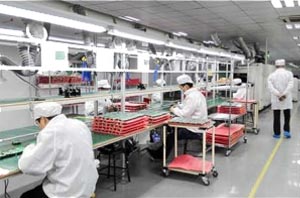If you have a laptop, it is most likely powered by a lithium-ion (Li-ion) battery. This type of battery has applications in a wide variety of consumer electronics, including PDAs and cell phones. They enjoy great popularity for both economic and technical reasons, particularly because of their high load/weight ratio.
Cylindrical lithium-ion batteries have replaced nickel-cadmium (NiCd) batteries, which were first used to power laptops, and nickel-metal hydride (NiMH) batteries, which replaced NiCd technology for laptops. They dominate the laptop battery market today because they are much lighter than other types of laptop batteries, last longer than other technologies, and because do not suffer from the memory effect phenomenon.

Ordinary lithium-ion batteries have twice the energy density of standard nickel-cadmium batteries. In addition, lithium-ion batteries have a cell voltage of 3.6 volts versus 1.2 volts per cell of nickel-cadmium batteries.
However, the disadvantages of lithium-ion batteries include the ability to damage damaged batteries under adverse conditions, they are more sensitive to high temperatures than other battery technologies in their ability to withstand a charge, they can fail when completely discharged, and their inherent chemistry. batteries cause degradation with age, in contrast to the stronger correlation between battery failure and older chemical battery charge/discharge cycles.
Lithium-ion computer batteries also require protective circuitry in the battery pack to monitor battery charge and maintain safe voltage and current levels, as well as ensure that the battery temperature remains within a safe operating range.
Cylindrical lithium-ion batteries are usually tubular, similar to the shape of a standard alkaline battery. Several cells are enclosed in a plastic housing and the individual cells are connected to provide the correct output voltage and to maximize storage capacity (nominally in milliampere-hours).